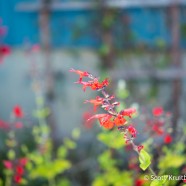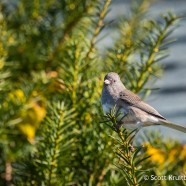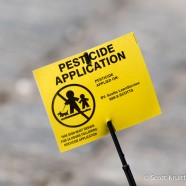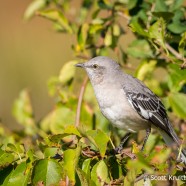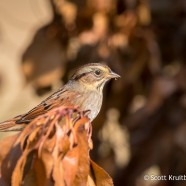Hummingbird Garden
This November has been a warm one until recently! As mentioned yesterday, the month is typically known for its avian rarities in the Northeast with southerly flow events followed by strong cold fronts, moving those that traveled up on those winds back down to coastal areas especially. Cave Swallows are a featured species in this phenomenon, with some more still being seen around the Great Lakes today and hundreds of others transported back to the New England coast to presumably move south again. Hummingbirds are also being seen more frequently in late autumn and early winter across the...
Read MoreMorning Dark-eyed Junco
Do you have your Dark-eyed Juncos (Junco hyemalis) back in your yard yet? I recently photographed this little returning bird with the early morning eastern sun lighting it up nicely. These variable feeder friends are moving through now after most other avian migration has wrapped up for the year. Soon enough it will be the Fox Sparrows and American Tree Sparrows, even if it does not feel like it with all of this warm weather…get your seed ready now, and keep watching for November rarities at home. Scott Kruitbosch Conservation & Outreach Coordinator
Read MorePesticides
Is this treatment really necessary in 2015? Do people think that a process which ends with a sign being erected warning them of pesticide and to stay clear for at least 24 hours, with a crossed out circle featuring a pet and a child, is somehow going to mean they have a healthy yard? How can anyone think these chemicals will not harm them, not to mention the environment, for a prolonged period of time? These little things drive me crazy, especially when my name is attached to it…we need to stop making some yards into fields of death, and besides that, what is the prettiest picture of...
Read MoreNorthern Mockingbird
The Northern Mockingbird does not need a mask because its incredible vocal range can turn it into nearly anything imaginable. Depending on where you live Mimus polyglottos may be an uncommon to rare species or a typical neighborhood pest. They have been advancing north in the past several decades, possibly because of development and more favorable habitats and likely thanks to climate change. They are still a scarce bird in the Chautauqua-Allegheny region likely for both of those reasons, as well as our higher elevation. Why the pest, you ask? One day, if you’re fortunate, you may wake up to...
Read MoreSwamp Sparrow
Swamp Sparrows can sometimes be difficult to photograph, but no one told this bird that it was not supposed to be captured this way! Those brush piles can be very productive at this time of year. Make sure to have one or two in your yard this winter, especially if you have bird feeders nearby. They provide cover and a great photographic opportunity.
Read More



